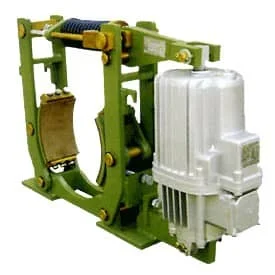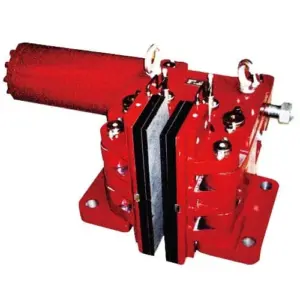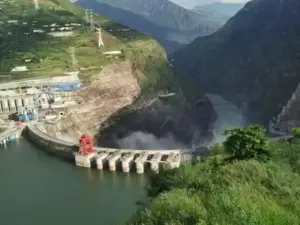In the world of industrial machinery, standard, off-the-shelf components are the backbone of countless applications. A catalog brake, like our proven YWZ Series Drum Brakes
But what happens when your project isn’t “common”? What if you’re pushing the boundaries of performance, operating in an extreme environment, or designing a machine with unique physical constraints? In these situations, forcing a standard brake into a non-standard application can lead to compromised performance, premature failure, and even safety risks.
This is when a custom brake solution transitions from a luxury to a necessity. But how do you know when to make that call? Ask yourself these five questions.

1. Does Your Application Involve Extreme Environments?
Standard brakes are designed for a typical industrial temperature range and atmosphere. If your project operates outside of this, you likely need a custom solution.
- Extreme Temperatures: Are you designing a furnace door brake that needs to withstand constant radiant heat, or equipment for polar exploration that must function at -40°C? This requires special materials for friction linings, seals, and hydraulic fluids, as well as design considerations for thermal expansion.
- Extreme Corrosion: Beyond standard marine environments, are you dealing with highly acidic chemical vapors or abrasive slurry? This may require specialized alloys (like duplex stainless steel), advanced coatings, and hermetically sealed components far beyond our standard
Corrosion Resistance options - Submersible or Vacuum Applications: Does your brake need to operate underwater or in a vacuum chamber? These applications demand unique sealing solutions and materials that do not outgas.
2. Are You Facing Unique Space or Weight Constraints?
Sometimes, the challenge isn’t performance, but packaging. In mobile machinery, aerospace, or compact automated systems, every gram and every millimeter counts.
- Is a standard brake’s form factor too large or the wrong shape for your design? A custom solution can integrate the braking components directly into your machine’s structure, using a unique caliper shape or a non-standard disc diameter to fit the available space perfectly.
- Is weight a critical factor? We can design brakes using lightweight materials like high-strength aluminum alloys or composites for non-structural parts, optimizing the strength-to-weight ratio without compromising safety.
3. Do You Have Unconventional Performance Requirements?
Your application might demand a braking behavior that standard models simply don’t provide.
- Extremely High Torque or Energy: Are you trying to stop a massive rotating mass, like a high-speed flywheel or a centrifugal testing rig? This might require a multi-caliper disc brake system or a custom-designed, water-cooled brake to handle the immense thermal load.
- Unique Control Needs: Do you need a brake with a highly specific, variable torque output for a tensioning application, or one with an ultra-fast response time for a precision automation task? This could involve custom actuator design or integration with specialized control electronics.
- Combined Functions: Do you need a single component that can provide both dynamic braking and a precise, high-torque static lock? A custom-engineered solution can merge these functions into one optimized package.
4. Does Your Brake Need to Integrate with a Non-Standard Component?
A brake doesn’t work in isolation. It must interface perfectly with the rest of your machine.
- Are you braking on an unusually shaped part? Perhaps you need to brake on the flange of an I-beam or a custom-profiled drum. We can design custom shoes or caliper jaws to match your component perfectly.
- Do you have a proprietary control system? Our engineers can work with you to ensure the brake’s actuator and any required sensors integrate seamlessly with your existing electrical and hydraulic infrastructure.
5. Is the Cost of Failure Unacceptably High?
For some applications, the reliability and safety factor must be pushed to the absolute maximum.
- Is the brake protecting a one-of-a-kind piece of scientific equipment or a critical piece of public infrastructure like a
Movable Bridge - Is the application unmanned and completely inaccessible for regular maintenance?
In these cases, a custom solution allows for the incorporation of redundant systems (e.g., dual independent hydraulic circuits), advanced condition monitoring sensors, and materials with certified, extended lifespans. The higher initial investment is easily justified by the near-elimination of failure risk.
The Custom Design Process: A Partnership
Opting for a custom solution means entering into a collaborative partnership with our engineering team. The process typically looks like this:
- Consultation & Discovery: We work with you to deeply understand your project’s challenges and define the exact performance criteria.
- Concept & Design: Our engineers use FEA (Finite Element Analysis) and 3D modeling to develop a concept tailored to your needs.
- Prototyping & Validation: We manufacture and rigorously test a prototype to validate its performance against the design criteria.
- Production & Support: Once approved, we move to full production and provide ongoing support for the life of the product.
The Right Choice for the Right Challenge
While our standard catalog offers a solution for 90% of industrial needs, a custom-engineered brake is the definitive answer for the other 10%. It is the right choice when performance, safety, and perfect integration are paramount.




